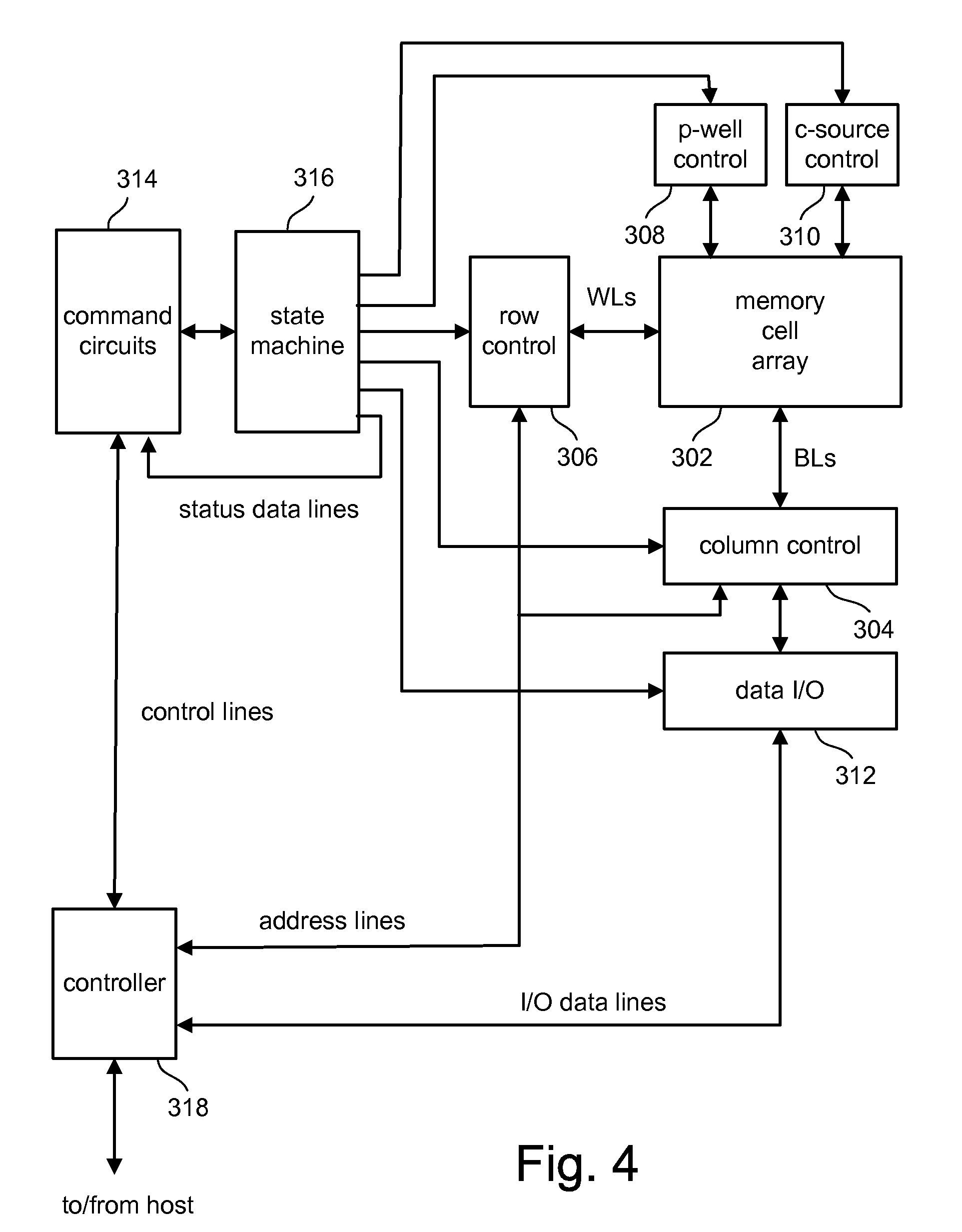Page by page ecc variation in a memory device
a memory device and page by page technology, applied in the field of nonvolatile memory, can solve the problems of erroneous reading of data stored failure of attempted data read, etc., and achieve the effect of higher data integrity
- Summary
- Abstract
- Description
- Claims
- Application Information
AI Technical Summary
Benefits of technology
Problems solved by technology
Method used
Image
Examples
Embodiment Construction
[0024]Technology is disclosed herein for optimizing the use of overhead in pages of data which have greater data reliability. Greater reliability can result from being subject to little or less floating-gate to floating-gate coupling or a row being designed to have greater spacing and / or greater line width (and hence greater channel lengths) from adjacent rows. User data is stored along with overhead information associated with overhead information concerning a logical block of data comprised of a set of pages. Such overhead information includes block hot count, compressed block hot count, a block rewrite flag, and logical to physical translation information. This overhead information can be stored in a portion of a page normally used for ECC information, since less ECC capability is required due to the greater reliability of the page.
[0025]The technology will be described with respect to one example of a flash memory system using a NAND structure which includes arranging multiple t...
PUM
 Login to View More
Login to View More Abstract
Description
Claims
Application Information
 Login to View More
Login to View More - R&D
- Intellectual Property
- Life Sciences
- Materials
- Tech Scout
- Unparalleled Data Quality
- Higher Quality Content
- 60% Fewer Hallucinations
Browse by: Latest US Patents, China's latest patents, Technical Efficacy Thesaurus, Application Domain, Technology Topic, Popular Technical Reports.
© 2025 PatSnap. All rights reserved.Legal|Privacy policy|Modern Slavery Act Transparency Statement|Sitemap|About US| Contact US: help@patsnap.com



